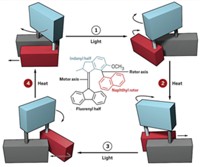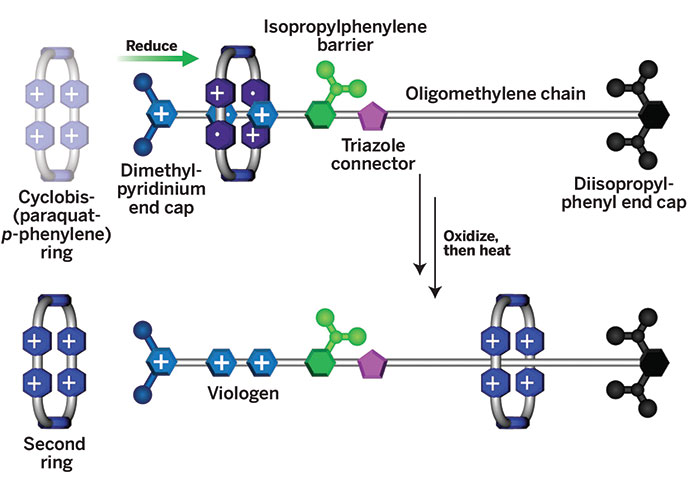Advertisement
Grab your lab coat. Let's get started
Welcome!
Welcome!
Create an account below to get 6 C&EN articles per month, receive newsletters and more - all free.
It seems this is your first time logging in online. Please enter the following information to continue.
As an ACS member you automatically get access to this site. All we need is few more details to create your reading experience.
Not you? Sign in with a different account.
Not you? Sign in with a different account.
ERROR 1
ERROR 1
ERROR 2
ERROR 2
ERROR 2
ERROR 2
ERROR 2
Password and Confirm password must match.
If you have an ACS member number, please enter it here so we can link this account to your membership. (optional)
ERROR 2
ACS values your privacy. By submitting your information, you are gaining access to C&EN and subscribing to our weekly newsletter. We use the information you provide to make your reading experience better, and we will never sell your data to third party members.
Molecular Machines
Electric molecular motor charges ahead
Oscillating voltage prompts molecular rings to trundle around a circular track
by Mark Peplow, special to C&EN
January 11, 2023

Molecular motors come in all shapes and sizes, but they generally run on either chemical fuels or light. Now, a team led by J. Fraser Stoddart at Northwestern University has invented a molecular motor that is powered by electricity (Nature 2023, DOI: 10.1038/s41586-022-05421-6). The motor consists of two molecular rings that move around a larger loop in response to an oscillating voltage, completing a full cycle in just a few minutes.
Whereas some chemically fueled molecular machines can be disrupted by the fuel’s waste products, the electric motor neatly avoids that issue. “One of the nice things about using electricity is that it solves the problem of waste,” says David Leigh of the University of Manchester, who was not involved in the work.
The electric motor’s cyclobis(paraquat-p-phenylene) (CBPQT4+) rings travel around their circular track thanks to a series of oxidation and reduction reactions—the same kind of chemistry that Stoddart has employed in a series of molecular pumps.

In their oxidized state, the rings stay far away from a pair of positively charged viologen units located at opposite sides of the track. But adding six electrons to the system reduces some of the positive charges on the rings and on the viologens, forming unpaired radicals on both. This prompts the rings to move 90° around the ring to meet the viologens, where they are held by radical-pairing interactions.
Reversing the voltage then removes six electrons and reestablishes the positive charges, which propels the rings another quarter-turn around the track. Crucially, the ring also features a bulky isopropylphenylene group and a charged 2,6-dimethylpyridinium group, which help to ensure that the rings rotate in a clockwise direction.
The team initially tested the motor using chemical redox reagents. Then they showed that it worked just as well in an electrochemical cell that switched between –0.5 V and +0.7 V. “The next step for our project is that we’ll attach the motor to a surface,” says Stoddart’s Northwestern colleague Long Zhang, who led the experimental work. By fixing one of the rings to an electrode, an oscillating voltage might make the circular track itself rotate—motion that could wash solvent over a surface, for example.
It’s not the first time that electricity has been used to animate a nanoscale motor. Researchers have made individual single-molecule motors move on a surface, under high vacuum, by giving them a jolt of current from the tip of a scanning tunneling microscope. Hendrik Dietz of the Technical University of Munich recently built much larger structures, using a technique called DNA origami, that act as electrically powered motors (Nature 2023, DOI: 10.1038/s41586-022-04910-y). And in unpublished work, Stoddart’s team has used electricity to drive molecular pumps mounted on a metal-organic framework.
Using electricity as a power source might eventually help to integrate molecular motors with other electronic technologies, Leigh says. “It’s just a super cool way of powering things,” he says.
CORRECTION:
This story was updated on Jan. 11, 2023, to correct the year of publication for the Nature article with DOI of 10.1038/s41586-022-05421-6. It is 2023, not 2022.





Join the conversation
Contact the reporter
Submit a Letter to the Editor for publication
Engage with us on Twitter